
by Glendale Sports Center | Mar 18, 2024 | Glendale City News
The YMCA of Metro Denver is proud to introduce our team of Certified Older Adult Fitness Trainers. Our fitness trainers understand that a one-size-fits-all approach does not work when it comes to fitness for seniors. Each individual has different fitness levels, goals, and health conditions that must be taken into account.
These trainers excel in designing personalized fitness programs that address the specific needs and goals of older adults. Whether it’s improving cardiovascular health, building strength, or enhancing flexibility, the programs are carefully crafted to be both enjoyable and effective. By tailoring workouts to individual abilities and preferences, Denver YMCA’s trainers create an environment where older adults can thrive in their fitness journey.
Certified older adult fitness trainers play a pivotal role in promoting the health and well-being of seniors. Beyond their knowledge of exercise physiology, they possess an understanding of the aging process and its impact on the body. This expertise allows them to des ign safe and effective workout routines that enhance mobility, improve balance, and contribute to overall vitality.
ign safe and effective workout routines that enhance mobility, improve balance, and contribute to overall vitality.
Adaptability And Ongoing Education
One of the hallmarks of Denver YMCA’s certified older adult fitness trainers is their commitment to adaptability and continuous learning. The fitness landscape is ever evolving, with new research and advancements in exercise science. The Denver Y ensures that our trainers stay abreast of the latest developments through ongoing education and professional development opportunities.
This commitment to staying current allows trainers to integrate the latest evidence-based practices into their programs, ensuring that participants receive the most effective and up-to-date fitness guidance. It also reflects a dedication to providing the best possible service to the older adults who entrust their health and wellness to the Denver YMCA.
The certified older adult fitness trainers at the Denver YMCA undergo rigorous training and certification processes to ensure they are well-equipped to cater to the unique needs of older adults. The certification process typically includes coursework on gerontology, exercise prescription for older populations, and specialized training techniques. Additionally, trainers receive education on medical considerations and conditions commonly affecting seniors, enabling them to provide a holistic approach to fitness that considers both physical and medical aspects.
Denver YMCA’s Commitment To Our Older Adult Community
The Denver Y is your third place between home and work. We are committed to creating a community for Older Adults that focuses on their health and wellness. Check out our Active Older Adult Programs as well as the programs at the Center of Generations.
To find out more information on the Certified Older Adults Training Program at the YMCA of Metro Denver, visit denverymca.org/certified-older-adult-fitness-trainers.

by Mark Smiley | Mar 18, 2024 | Travel
Gaylord Rockies will house a golf and interactive gaming simulator available to rent for fun, interactive social gatherings, or private practice sessions.
by Mark Smiley

Soccer: The goal is simple: You get five kicks to get the ball past the All-Star keeper and find the back of the net.

Jewel Jam: In Topgolf’s take on the classic match-three puzzle game, rack up points by matching three or more gems of the same color in a row or column. A little precision and a lot of luck could start a chain reaction that sends you to the top of the leaderboard.
Gaylord Rockies Resort opened its first Topgolf Swing Suites, housed within their Mountain Pass Sports Bar.
The Topgolf Swing Suite features two simulator bays and a variety of virtual games–including signature Topgolf target games, Zombie Dodgeball, Hockey, Baseball, Football, Carnival games, and more — paired with comfortable lounge seating, HDTVs, and food and beverage service.
“As Colorado’s largest combined resort and convention center, we are experts in providing extraordinary spaces for gatherings. Our partnership with Topgolf allows us to offer another fun and unique experience for quests,” said Suzy Hart, general manager of the 1,501-room resort. “Since Full Swing simulators come with games tailored for both novices and experienced golfers, all participants can enjoy themselves.”
Up to eight people can play, eat, drink, and hang out in each bay. The space will be available to rent for business and social gatherings, including birthday and bachelorette/bachelor parties, team building events, corporate meetings, and more.
The Topgolf Swing Suite opened at Gaylord Rockies in February 2024, taking its place as the fifth location in Colorado to host Topgolf Swing Suites. For updates, visit www.gaylordrockies.com/dining.

by Editorial Board | Mar 18, 2024 | Editorials
Editorial —
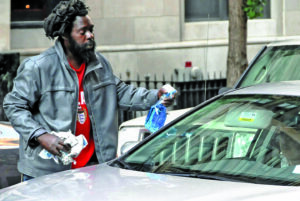 The residents of the Queen City of the Plains are facing a Brave New World with our indomitable Mayor Mike Johnston at the helm of our ship of state. The helmsman has spent the first few months of his term finding sites for his homeless micro-communities and recently began opening them over the strenuous objections of the affected residents.
The residents of the Queen City of the Plains are facing a Brave New World with our indomitable Mayor Mike Johnston at the helm of our ship of state. The helmsman has spent the first few months of his term finding sites for his homeless micro-communities and recently began opening them over the strenuous objections of the affected residents.
The largest homeless ‘micro-community’ has just opened in Overland Park, the future homes of 47 homeless people and if all goes well, expanded to 120 units.
The assurances of government have not impressed Craig Arfsten the head of “Safe and Clean Denver.” Arfsten told the Denver Gazette: “Today may be a win for the mayor, but it’s not for the residents of the Overland Park neighborhood. Yes, the pallet sheds are in place, but the safeguards to protect the surrounding neighborhood are not.”
Of course, it has been quite a while since a mayor of Denver has actually cared what the residents think or want. The problems of the 4,000 plus homeless facing Mayor Johnston seem almost quaint when compared to the avalanche of 40,00 penniless “newcomers” descending into Denver from the Texas border thanks to the Governor of Texas and the federal government.
Johnston’s largess to the newcomers is two weeks of shelter and food and then they are supposed to be kicked to the curb. It is not clear what they are to do after that. Johnston has tried to move the newcomers to Denver into neighboring municipalities but other than Lakewood, the surrounding cities don’t seem very accommodating to the project.
Across Denver some of the newcomers are appearing as squeegee men who will clean your car windshield whether you want them to or not. The last time squeegee men were prominent in America was in New York City under Mayor David Dinkins in the early 1990s. They were credited with helping to get Dinkens thrown out of office in favor of Rudy Giuliani in 1993.
Denver’s newcomer squeegee men do not appear to be a danger to our new progressive Mayor. To help pay for the newcomers’ cost to the city Johnston closed Motor Vehicle Offices and recreation centers every other week. This effort of course greatly inconvenienced many residents, but we know that Denverites are gluttons for punishment.
As more newcomers arrive from the Texas border we suggest Johnston start closing down garbage pickup followed by providing water only on alternative days. As a sociological experiment Denverites need to find out exactly how much punishment they can handle until they finally rise in revolt. Based on what has happened over the last 13 years, residents can undergo a great deal more punishment and we trust in Mayor Johnston to ladle it out in hefty doses.
— Editorial Board

by Mark Smiley | Mar 4, 2024 | General Featured
By Mark Smiley

Photo by Olivier Brajon
Since 2017, CRYSTAL has performed in front of more than 1.9 million people in over 135 cities worldwide, blending the art of skating with adrenaline-inducing acrobatics and aerial feats. In total, the show spans two and a half hours with an intermission.
“CRYSTAL really pushes the boundaries of possibility within the circus arts. The show highlights Cirque du Soleil’s creativity in a new way and encourages audiences to find the magic of the everyday,” says Robert Tannion, Artistic Director, CRYSTAL. “Every time you watch, there’s something new to see and experience. It’s a magical story that springs to life on the ice and we can’t wait to bring it to Denver for the first time.”
Created by Shana Carroll and Sebastien Soldevila, CRYSTAL takes audiences on a journey of self-discovery. Dive into a world of playful imagination with the show’s protagonist, Crystal, as she learns to see things differently and become whom she was always destined to be: herself.
“The show is about a girl named Crystal who has a breakthrough experience where she sees her life in a different way,” said Crystal Manich, Cirque Crystal’s Artistic Director. “Before she has this experience we see how she struggles to fit in both at home and at school. She is a bit of an outcast. The show is about her journey of self-discovery and finding her voice and becoming a creative force in her own life realizing that she has things to do in order to grow.”
The show features a mixture of acrobats and ice skaters which is rare. In fact, it is the 42nd cirque creation and the company’s very first acrobatic experience on ice. This show features seven traditional circus acts, including trapeze, hand-to-hand, Banquine, aerial straps, hand-to-trapeze, juggling, and hand balancing – all adapted to be performed on ice. CRYSTAL is the first Cirque du Soleil production that uses real snow – the team makes approximately 300 snowballs each week.
“The response has been really great because we have all of the elements of a perfect Cirque du Soleil show but the ice does add an extra element of awe,” said Manich. “You’ll see everything you would expect to see in a Cirque du Soleil show and some surprises because of the uniqueness of the show itself.”
This type is show presents challenges not seen with a typical Cirque du Soleil show. Every arena has different ice and some performers say certain ice may be too soft or too hard in a particular venue.
“What people should expect is to have a great time and to see some of the world’s best performers on the ice in a unique way coming together with these various disciplines,” said Manich. “I think this is a special show.”
CRYSTAL Performance Schedule at Ball Arena:
Wednesday, March 13, 2024 – 7 p.m.
Thursday, March 14, 2024 – 7 p.m.
Friday, March 15, 2024 – 7 p.m.
Saturday, March 16, 2024 – 11:30 a.m., 3:30 p.m., & 7:30 p.m.
Sunday, March 17, 2024 – 12 p.m.
Tickets for Crystal are now available online at www.cirquedusoleil.com/crystal.
Photos : Matt Baker & Olivier Brajon
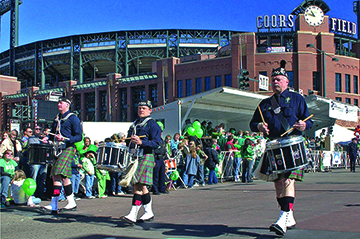
by Valley Gadfly | Feb 19, 2024 | Travel
Shamrocks & Shenanigans Set To Color Denver Green; Then Bunny Kisses & Easter Wishes Make Us Good Eggs
by Glen Richardson
May your heart be light and happy, may your smile be big and wide, the Mile High City is again Shamrockin’ & Rollin’ to Dublin Day in Denver.
Always celebrated with enthusiasm, with a bit of Irish blarney and a touch of magic too, St. Patrick’s Day begins at 9:30 a.m. on March 16 with the largest St. Patrick’s Day Parade west of the Mississippi River and one of the largest in the U.S.
With an Irish kiss, plus a snog o’ bliss, this month is egg-stra special with Easter falling on March 31. Hallelujah! Denver ends the month bringing baskets full of spring things to do ranging from egg hunt extravaganzas and bunny bolts to scrumptious spring feasting.

Mile High March: The largest St. Patrick’s Day Parade west of the Mississippi River steps off at 9:30 a.m. on March 16.
Magic Irish March
The parade will start on Wynkoop St. at 19th Ave., turn southeast down 17th Ave. before turning northeast on Blake St. — renamed Tooley St. for St. Paddy’s Day — then continue on Blake St. until 27th Ave. For a good viewing spot, people begin arriving at 6 a.m.
As in previous years, the parade is expected to draw more than 200,000 spectators. It will feature 10,000 plus participants, including Irish step dancers, marching bands, bagpipers, and elaborate floats.
The Mile High version is renowned, drawing nearly half a million people downtown on parade day. The St. Paddy’s Day crowd is believed to be Colorado’s largest single gathering in one place.
Pub Grub
Cherry Cricket Ballpark. Both the Cherry Creek and Blake St. locations offer deals in honor of St. Patrick’s Day, but the downtown space offers close access to the parade. Enjoy beer specials all weekend — including green Coors pours — plus Irish dishes such as Irish beef stew. Information: 303-297-3644.
The Irish Rover. This S. Broadway pub with a long lineup of Celtic brews, plus outdoor and rooftop seating, is the perfect St. Paddy’s Day spot. Try the Corned Beef Reuben & Fries, Shepherd’s Pie, and Bangers & Mash. There’s a Tent party on the 17th, 11 a.m.-9 p.m. Information: 303-282-4643.

Corned Beef & Cabbage: Slice of Irish- American culture is no longer served in Denver except at Monaco Inn Restaurant for St. Paddy’s. Enjoy for lunch and dinner on Monday March 18.
Monaco Inn Restaurant. Corned Beef & Cabbage originated as part of Irish-American culture, but is no longer served in Denver. A dozen years ago this South Monaco Parkway restaurant started serving the dish as the Saint Patrick’s Day special. Restaurant is closed on Sunday, but is serving on Monday, March 18, for lunch and dinner. Information: 303-320-1104.
Scruffy Murphy’s. Rustic knickknack- filled Irish bar and beer garden on Larimer St. serves up suds, Scotch & snacks, plus live music. Kitchen serves a few Irish mainstays like Shepherd’s Pie, and Bangers and Mash. Information: 303-291-6992.
Easter Ends March
Worship Services
Easter Sunrise Service: Easter begins early with the Colorado Council of Churches’ 77th Easter Sunrise Service at Red Rocks Amphitheater at 5:30 a.m. on March 31. Gates open for services in a dramatic and spectacular setting at 4:45 a.m., pre-worship service music begins at 5:30 a.m., with services starting at 6 a.m.
Free and open to the public, seating and parking are on a first-come basis. Reserved parking-seating is sold out. The event is not collecting food donations this year.
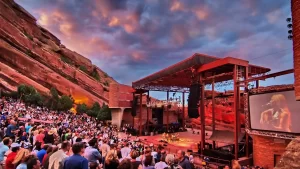
Stunning Sunrise: The 77th Easer Sunrise Service at Red Rocks Amphitheater is March 31, 5:30 a.m. Gates open at 4:45 a.m., pre-worship music begins at 5:30 a.m.
The Blood Brothers — a six-piece band that plays rock, folk, country, blues, and worship music — will entertain. Additional details were not available as the Chronicle went to press. Information: 303-825-4910.
Cathedral Basilica: Holy week at the Basilica on the corner of Logan St. and Colfax Ave. has the church’s most beautiful liturgies. Holy Saturday Vigil is 8:15 p.m., Easter Sunday Mass is at 8:30 a.m., 10:30 a.m., 12:30 p.m., and 6:30 p.m. Information: 303-831-7010.
Saint John’s Cathedral: Cathedral is the seat of the Bishop of the Episcopal Diocese of Colorado at 1350 N. Washington St. Easter Services are at 7:30 a.m., 9 a.m., & 11 a.m. There will be an Easter egg hunt for children following the 9 a.m. services on the East Lawn. Information: 303-831-1350.
Egg Hunts

Celtic Charm: This rare variation of the three-leaf clover, according to Irish tradition represents luck, love, faith, and hope.
Infinity Park: Get the kids excited about Easter early by taking them to the Glendale Easter Eggstravaganza at Infinity Park’s Turf Field on Saturday, March 23, 10 a.m. There are three age group hunts: Ages 0-3, 4-6, and 7 to 12. Only one parent is allowed in egg hunts for children under the age of seven. No parents are allowed with children age 7+. Parking is in P1, located on the northeast corner of Kentucky & Cherry. Information: 303-639-4711.
Four Mile Park: One of the Valley’s biggest and far from conventional Easter Egg Hunts is at the 12-acre Four Mile Historic Park March 30, with events at 8:30 a.m. and 1:30 p.m. The event includes a search for golden eggs, each concealing special prizes.
This year the park has crafted three distinct egg scrambles catering to kids of all ages. The youngest — aged four and under — can partake in a hunt in the kiddie corral. Meanwhile, older kids — aged five-nine and up — can engage in two separate hunts.
Post-hunt includes photos with the Easter bunny, and spring-themed crafts. A kid-friendly concert by Animal Farm features Inspector Magic. There’s also a Victorian Egg Rolling contest plus Magical Egg Chairs. Delectable snacks are available from food trucks, plus shopping at the Spring Marketplace. For adults, the Four Mile Bar features mimosas, Bloody Mary’s, and a fully stocked bar. Information: 720-865-0800.
Egg-citing Eating

Egg-citing Egg Hunt: Four Mile Historic Park hosts one of the Valley’s biggest Easter Egg Hunts on March 30, at 8:30 a.m. and again at 1:30 p.m.
Edge Restaurant: Hop over to the Edge Restaurant & Bar in the Four Seasons Hotel downtown for their annual Easter brunch. A raw bar, appetizers, salads, several entrée options, plus a carving station are usually offered. Information: 303-389-3050.
Ellyngton’s: Celebrate the holiday with breakfast and Easter brunch in the restaurant’s regal 19th-century dining room at the Brown Palace Hotel. Choices usually include waffles, pastries, omelets, salads, sushi, grilled meats, other choices. Information: 303-297-3111.
Fire Restaurant: Experience brunch at the indoor-outdoor Easter setting in the ART Hotel on Broadway. Spring omelets, much more, plus a Bunny Menu for the kids. Information: 720-709-4431.
Local Jones: For a tasty holiday morning in Cherry Creek North, do brunch at this classic bistro in the Halcyon Hotel. Always delightful. Information: 720-772-5022.
Monaco Inn Restaurant: Presenting annual Easter special from noon to 8 p.m. Restaurant is serving Colorado Spring Leg of Lamb with Greek potatoes, Greek Salad, and Avgolemono Soup. Menu also has other Greek & American specialties. Saganaki appetizer, plus homemade baklava for dessert. Information: 303-320-1104.
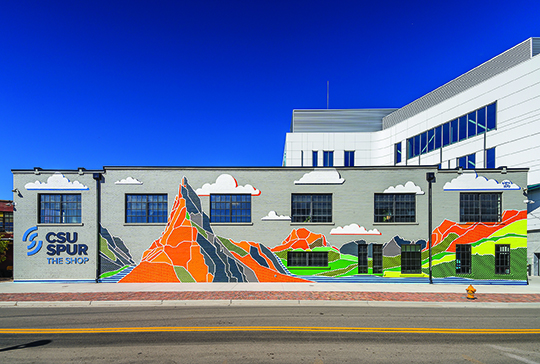
by Jessica Hughes | Feb 19, 2024 | General Featured
by Jessica Hughes

Green Dot Coalition was awarded a grant of $10,000 through the RiNo Art District Social Impact Grants program.
2024 is shaping up to be a good year for the latest recipients of the RiNo Art District’s Social Impact Grants, which recently awarded an amount of $75,000 — the program’s largest amount to date.
While most people know the RiNo Art District for its extensive collection of mural art and the newest annual art festival, Denver Walls, the district also plays a big role in supporting its local artists, businesses, and community through the RiNo Business Improvement District (BID).
The Social Impact Grant program first became available to local organizations in Five Points, Globeville, Elyria-Swansea, and Cole in 2020 after the murder of George Floyd. “We wanted to do something more impactful and to allocate money to organizations doing the hard work in the community,” says Alye Sharp, Deputy Director for RiNo Art District.
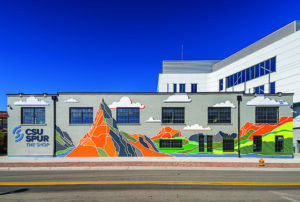
Curecanti Spur, mural by Lindz and Lamb at CSU Spur Campus Denver, CO.
To date, the organization has awarded a total of $225,000. The RiNo BID has additionally committed to increasing funding for the Social Impact Grants program every year.
“There were so many incredible organizations nominated this year addressing everything from social justice and food scarcity, to homelessness and youth arts education,” said Sharp. “We are so appreciative of the review committee’s passion for identifying and advocating for these organizations and appreciate our BID’s commitment to directing RiNo’s collective resources towards this important work in our community.”
Among the recipients of this grant are CIRCLE, EGS + Partners, Green Dot, Mo Betta, The People’s Pickle, and Youth Empowerment Broadcasting Organization (YEBO Media), who will each receive $10,000 to support community members in the five historic neighborhoods. Birdseed Collective will receive $15,000 to support their mission of educating and empowering disadvantaged and under-resourced individuals throughout the Denver area through food delivery, environmental equity work, youth-focused projects and events, art accessibility, work with immigrant communities, and more.
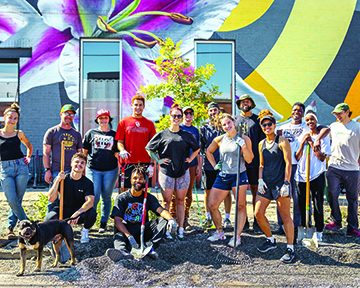
Green Dot Coalition is an equity-focused placemaking organization working to translate community vision into green spaces, practices, and policies.
With the goal of placing equity at the center of grant-making decisions, recipients are nominated by a diverse committee of local community members, this year led by Denver City Council District 9 Councilman Darrell Watson.
“RiNo’s Social Impact Grants allow us to amplify and celebrate the extraordinary work taking place every day in our District to address some of our most pressing social issues,” said Councilman Watson. “These grants are an investment in a city that works for everyone, and I’m excited to see how the selected organizations leverage their funds in service of their neighborhoods and their communities.”
Sharp also emphasized that they wanted this grant program to be an easy process for everyone to apply. “It was important that this money be unrestricted. Being able to directly write a check for the recipients is super important.”
Founded by the local artists Tracy Weil and Jill Hadley-Hooper, the RiNo Art District, a 501(c)(6) nonprofit arts organization, was created to help foster a thriving, welcoming, and creative community of artists, residents, and businesses.
As the area’s growth has surged over the years, so did the art district. “Big shifts happened in 2014 when the community came together and wanted to retain some of that creative control of how the district improved,” says Sharp.
Today, the district overlays five historical neighborhoods: Globeville, Elyria, Swansea, Five Points, and Cole. Over the last decade, RiNo Art District has helped form both a Business Improvement District (BID) and General Improvement District (GID) and a community arts educational nonprofit (Keep RiNo Wild) to support the local community.
“It’s a collaborative community of small businesses including galleries and studios, plus an incredible amount of public art,” says Sharp. “There are quite a few working artists in the district with studio space and galleries. It is a place that art is being made every day.”
“We extend our deep gratitude to the RiNo Art District for their generous support to EGS & Partners,” said Sandra Ruiz Parrilla, CEO of EGS & Partners. “This fund will not only strengthen our mission to improve our neighborhoods and offer vital mental health art therapy programs, but will also allow us to grow and get even closer to the community, effectively engaging residents in Elyria-Swansea and Globeville neighborhoods. Together, we will move forward toward promoting environmental and social justice, promoting health, and building a stronger, healthier community. Thank you for being a valued partner in our shared mission!”
To learn more, visit the RiNo Art District at rinoartistrict.org.
Photos provided by: RiNo Art District

 ign safe and effective workout routines that enhance mobility, improve balance, and contribute to overall vitality.
ign safe and effective workout routines that enhance mobility, improve balance, and contribute to overall vitality.
















